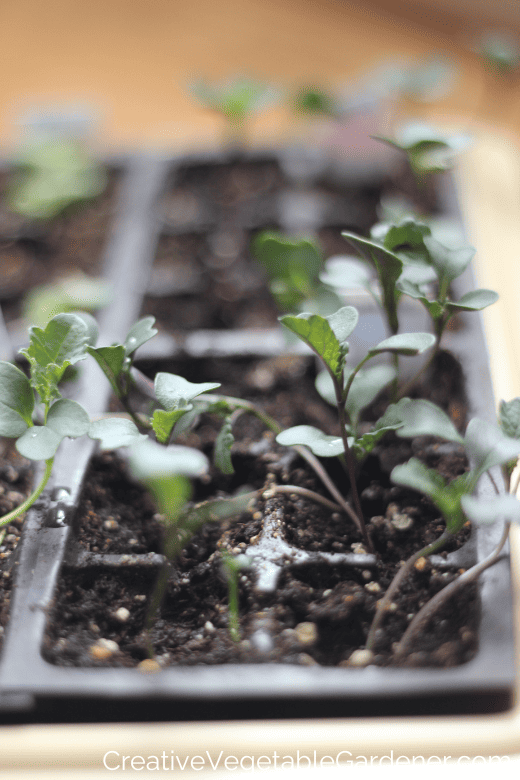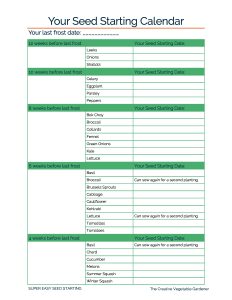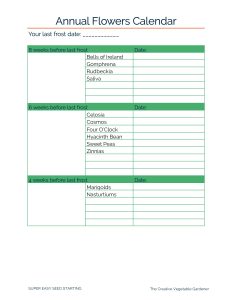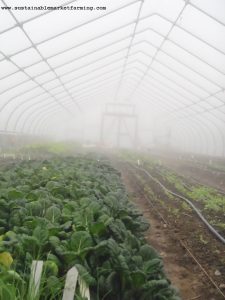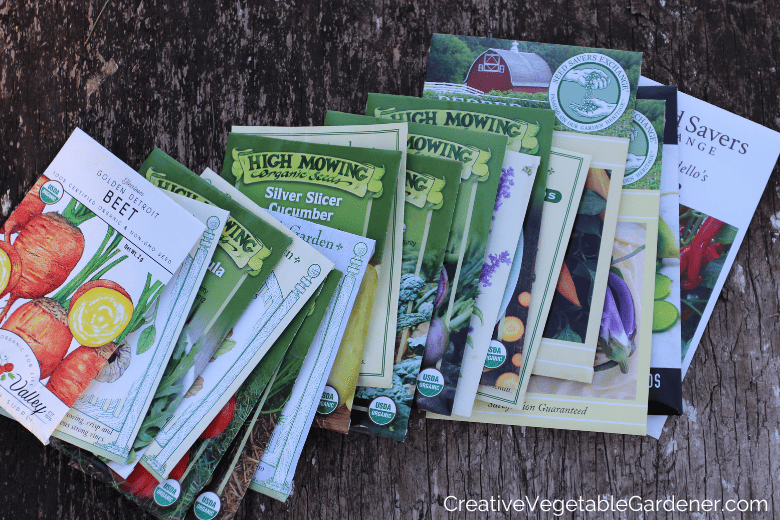
I’ve lived and gardened in zone 5 (Madison, Wisconsin) for the bulk of my gardening life, over 20 years! This zone is no joke with bitterly cold winters and hot, humid summers – we have it all. The winters are long in Wisconsin, which is one of the reasons why I love starting seeds for my garden.
It’s one of my favorite rituals to kick off the gardening season when it’s still cold outside.
Every winter, I see a lot of questions flying around about when to start seeds indoors in zone 5 from other gardeners in the Wisconsin and Midwest groups I’m in.
There is an art to the timing of starting seeds. Plant them too early and they get big and unwieldy before it’s time to put them into the ground. Wait too long and they’re too tiny and vulnerable to stand up against the spring weather.
Luckily, I’ve been successfully starting my own seeds indoors for over 20 years, so I have plenty of tips and resources to share around timing for when to start seeds indoors in zone 5 to help you skip over the beginner mistakes.
How to Know When to Start Seeds Indoors in Zone 5
Understanding Zone 5
Zone 5 encompasses regions with cold winters that all fall in the northern United States and up into Canada. If you take a look at this USDA Plant Hardiness Map you can see that the 5a and 5b zones span across the Midwest into upper NY state and into New England.
If you live in Canada, check out this post by Empress of Dirt about determining your gardening zone.
In the US, what zone you’re in is determined by the average minimum temperature where you live. On the key to the right of the map you’ll see that for zone 5a it’s -20 to -15 °F (-28.9 to -26.1 °C) and zone 5b it’s -15 to -10 °F (-26.1 to -23.3 °C).
Zone 1 is the coldest (hello, Alaska!) and zone 13 is the warmest (ahh, Hawaii!). As you can see, there’s a very subtle difference between zone 5a and 5b, so you don’t necessarily need to use those a and b distinctions. My garden moved from 5a to 5b with the latest update, but most of the time I just say I live in zone 5.
If you’re not sure if you live in zone 5, you can enter your zip code into the USDA site above and it will show you what zone you’re in.
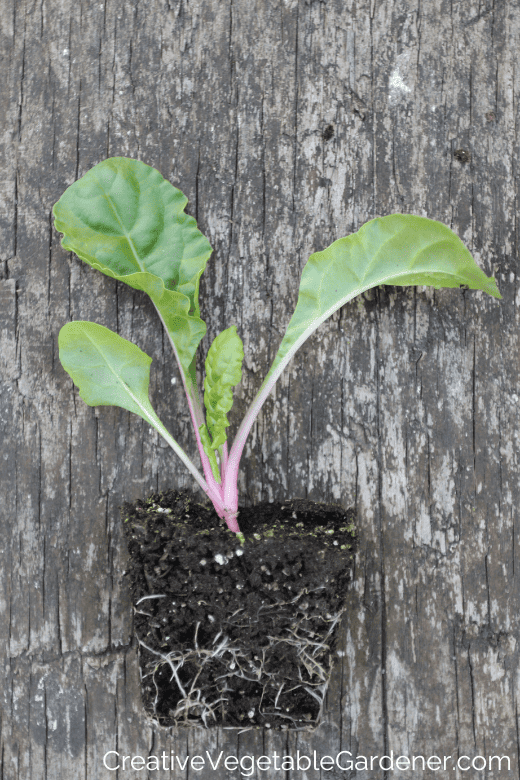
Understanding Last Frost Dates
The growing season typically ranges from the last frost in spring to the first frost in fall. (Although if you can plant and harvest outside of this window with special techniques.) The average last frost date in spring is the most pivotal factor in determining when to start seeds indoors.
The best way determine yours is to go to the website plantmaps.com and enter in your zip code.
It will pull up lots of information about your area, including your average last frost. When I input my zip code, it shows that my average last frost date is between May 11-20. This is pretty accurate in my experience, BUT keep in mind that the actual day of the last frost can vary widely from year to year, especially with changing climate conditions.
Although my average last frost usually falls within this range, we have had frosts as late as Memorial Day Weekend. (I lost all of my peppers plants that weekend. True story!)
Because we’re using this date as a guide for starting seeds indoors, it’s doesn’t have to be perfect. I use May 15 as my average last frost date and my guide for seed starting.
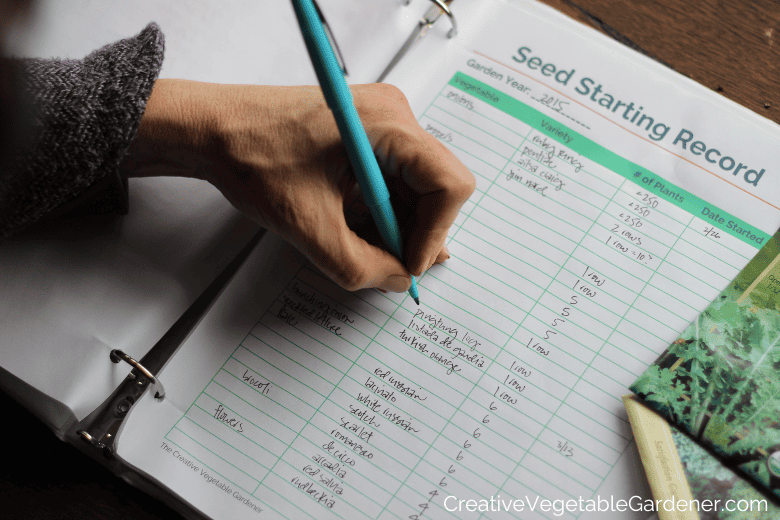
When to Start Seeds Indoors Chart
Because I start seeds every winter, many years ago I decided to start keeping better records so I didn’t have to reinvent the wheel every year. Although in most areas of my life I keep my records on my computer, for gardening I keep manual records. There’s something pleasurable for me in actually writing down what I’m doing and observing as I move through the various stages of gardening.
I have a real life binder for seed starting that holds most of my records from the last 10 years. The cover page to this binder is my Seed Starting Calendar. I’m gifting it to you to download below!
Click on the image below to print it out or upload it to your computer. Complete one of those steps and then meet me back here.
The next step is to go back to the Plantmaps.com page and fill in your average last frost date at the top of the Seed Starting Calendar. You can use a date somewhere in the range they list. For my zone 5 garden I use May 15.
Then, use a calendar to count backward from your last frost date to fill in the rest of the dates next to Your Seed Starting Date in the green headings in each section on your Seed Starting Calendar.
For example, if my average last frost date is May 15, then counting back 12 weeks take me to Feb 15, so I write Feb 15 next to Your Seed Starting Date in the top line above Leeks, Onions, Shallots.
You can continue doing this for 10, 8, 6, 4 weeks before your average last frost.
And voilà, you now have a chart that tells you when to start seeds indoors in zone 5.
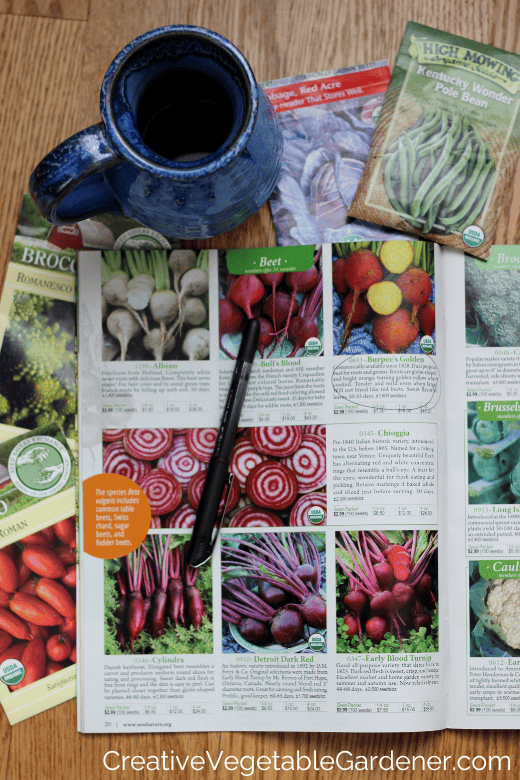
How to Use Your Seed Starting Calendar
This calendar is your starting point, not the end all and be all! I’ve tweaked my dates over the last 10 years as I’ve experimented with various ways to start seeds.
For example, because I use a heat mat for starting tomato, eggplant, and pepper seeds, I have pushed back my starting date a couple of weeks because the plants grow quickly with the extra heat.
Ideally, you want your seedlings to be stout when you plant them outside in the garden in spring. Big and unwieldy plants are more likely to get damaged during planting and in rough conditions like high winds. Tiny plants that don’t have many leaves are equally vulnerable and might suffer from more shock once transplanted.
If you find that your plants are getting too big before it’s time to plant them into your garden, you could shift some of your seed starting dates a little later.
In contrast, if your plants are teeny when spring arrives you may want to shift your dates back a bit so they have more time to grow.
The conditions that you’re growing your plants in will affect how long they take to germinate and how quickly they grow. I start my seeds in a south facing room that gets a lot of light and warmth throughout the winter and use supplemental heat for the hot weather vegetables, so my plants tend to grow quickly.
I highly recommend you read my article about the common mistakes of seed starting.
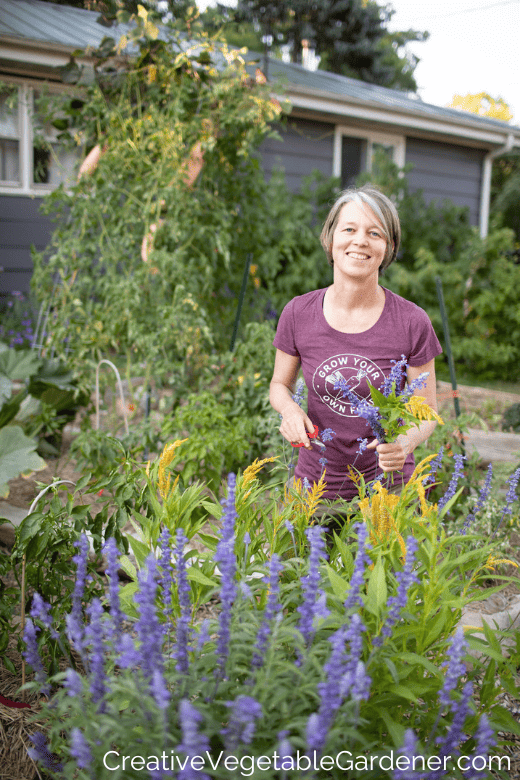
When to Start Flower Seeds Indoors Chart
I’ll proudly admit right here, my vegetable garden is a gorgeous sight to behold.
What’s my secret?
I plant lots and lots of flowers in and around my vegetable garden.
This is one of the most simple things you can do to elevate your garden from a place where you just grow food to a garden that draws in and wows visitors and passersby on the street.
Tucking flowers throughout your garden will add colorful pops of beauty to draw the eye into and through the space, attract tons of beneficial insects like bees, butterflies, and hummingbirds, and impress your neighbors because they’ve never seen a vegetable garden looking so good!
Read more about my favorite vegetable and flower garden ideas.
The Seed Starting Calendar for annual flowers below is another bonus I’m sharing with you! On it, you can see my favorite flowers to start for my vegetable garden. It doesn’t cover perennial flowers, which are a whole different game when it comes to seed starting.
Click on the image below to print it out or upload it to your computer.
You can follow the same steps as you did for the Seed Starting Calendar. Fill in your average last frost date and then use a calendar to count backwards to fill in the rest of the dates.
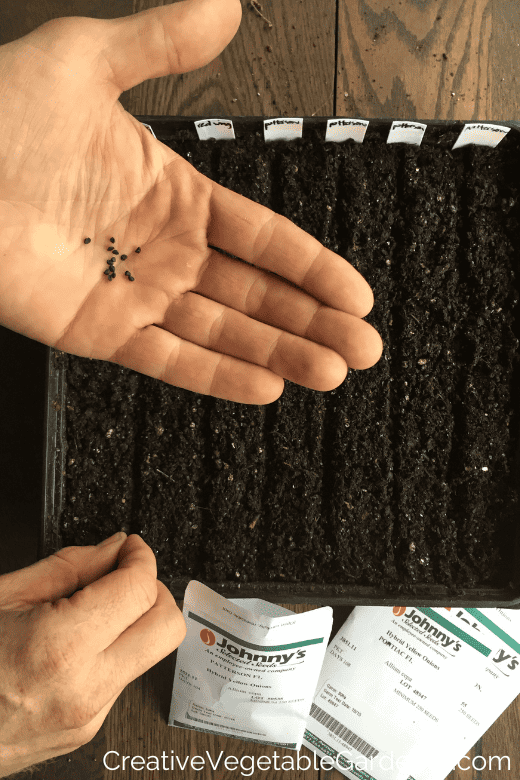
More Seed Starting Resources
Want help successfully growing your own plants this year? My how-to video series, Super Easy Seed Starting, can be watched at your own pace and includes printable handouts, templates, and checklists.
The videos are all filmed in my own seed starting laboratory (a.k.a. my house) and walk you step by step through the process of starting and caring for your own seeds at home. Read more about it here.
Find out how to choose grow lights for seed starting and how to build your DIY grow lights. Then read about the best seed starting mix and tips for how to germinate seeds successfully.
You can find all of my favorite seed starting supplies, and much more, in my Amazon storefront.
SHARE IT ON PINTEREST

